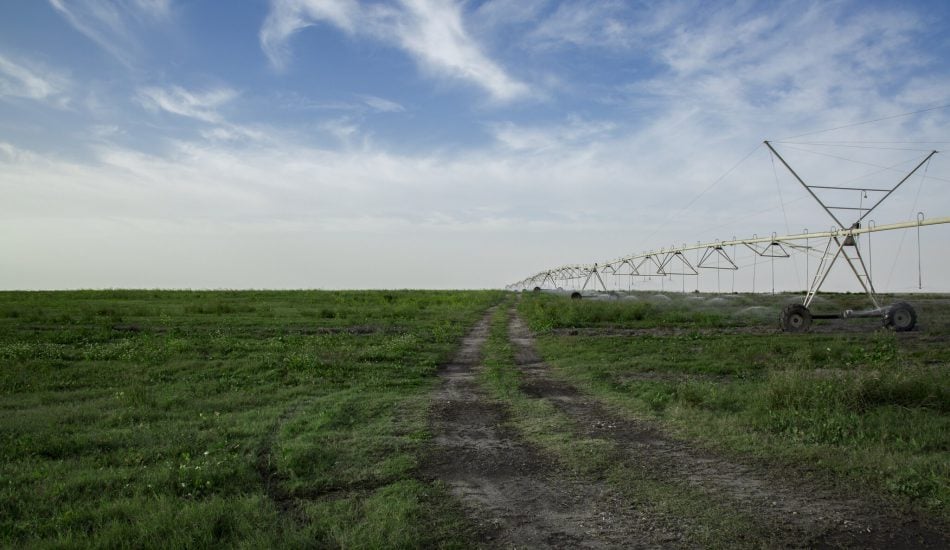
Sectoral water use
As Figure 1 demonstrates, the domestic sector (43%) is the largest water consumer as per 2014, followed by the agricultural sector (37%). Qatar has one of the highest domestic water consumption rates in the world, at approximately 430 L/cap./d.[1] Domestic water is largely provided by the Qatar General Electricity and Water Corporation (Kahramaa) as well as domestic and municipal wells. As shown in Table 1, domestic water use was about 141.1 MCM in 2006 and increased to 342.31 MCM in 2016.[2]
Figure 1: Water consumption by the different sectors in 2014.[3]
Table 1: Domestic water use by source (2006-2016).[4]
| Water supplied by Kahramaa MCM | Domestic wells MCM | Municipal wells MCM | Total water use MCM | |
| 2006 | 121.90 | 9.9 | 9.3 | 141.10 |
| 2007 | 133.96 | 9.9 | 9.3 | 153.16 |
| 2008 | 170.09 | 9.9 | 9.3 | 189.29 |
| 2009 | 237.66 | 9.57 | 9.34 | 256.57 |
| 2010 | 260.23 | 9.82 | 9.34 | 279.39 |
| 2011 | 275.68 | 9.69 | 10.19 | 295.56 |
| 2012 | 288.70 | 9.6 | 10.38 | 308.68 |
| 2013 | 308.02 | 9.7 | 10.2 | 327.92 |
| 2014 | 327.49 | 9.7 | 10.4 | 347.59 |
| 2015 | 318.81 | 9.7 | 10.4 | 338.91 |
| 2016 | 322.21 | 9.7 | 10.4 | 342.31 |
Agriculture’s contribution to GDP is 0.13%, and it employs 1.3% of the labor force. The sector’s economic yield is low compared to its use of already limited water resources. More importantly, 65% of groundwater is used for fodder farming.[5] Agricultural water use in Qatar ranges between 37% and 40% of the total water resources and is used for the production of local crops, which meet only 8% of the national demand for food and fodder.[6] In 2016, the total quantity used in agriculture was 66.3 MCM, approximately 22% of the total agricultural water use (Table 2).
Table 2: Water used in agriculture by source (2006-2016).[7]
| Abstracted groundwater MCM | Treated wastewater MCM | Total MCM | |
| 2006 | 225 | 32.69 | 257.69 |
| 2007 | 225 | 29.05 | 254.05 |
| 2008 | 226 | 22.15 | 248.15 |
| 2009 | 227.8 | 21.09 | 248.89 |
| 2010 | 228.88 | 32.28 | 261.16 |
| 2011 | 229.47 | 41.98 | 271.45 |
| 2012 | 230.05 | 58.71 | 288.76 |
| 2013 | 230 | 55.23 | 285.23 |
| 2014 | 230 | 64.92 | 294.92 |
| 2015 | 230 | 61.7 | 291.7 |
| 2016 | 230 | 66.29 | 296.29 |
Within the industrial sector, the total water use increased from 8.3 MCM in 2006 to 11.62 MCM in 2016 (Table 3).[8]
Table 3: Water used in industry by source (2006-2016).[9]
| Water supplied by Kahramaa MCM | Industrial groundwater MCM | Total water use MCM | |
| 2006 | 5.5 | 2.80 | 8.30 |
| 2007 | 6.2 | 3.40 | 9.60 |
| 2008 | 8.6 | 0.18 | 8.78 |
| 2009 | 7.18 | 0.18 | 7.36 |
| 2010 | 7.58 | 0.18 | 7.76 |
| 2011 | 9.58 | 0.18 | 9.76 |
| 2012 | 10.02 | 0.18 | 10.20 |
| 2013 | 10.14 | 0.18 | 10.32 |
| 2014 | 10.3 | 0.18 | 10.48 |
| 2015 | 10.57 | 0.18 | 10.75 |
| 2016 | 11.44 | 0.18 | 11.62 |
Water use balance and water availability
Accelerated industrial development coupled with population growth has increased the pressure on Qatar’s water resources. In 1995, the population was an estimated 500,000. The most recent population census in February 2020 put that figure at more than 2.78 million.[10] Moreover, Qatar has one of the world’s highest per capita water consumption rates, at almost 500 L/cap./d. The Qatar National Development Strategy 2011-2016[11] estimated that by 2020, water consumption would increase by almost 5.4% for Qataris and 7% for expats, who make up a significant portion of the population.
Hereafter, the rise in population and water consumption, together with the continuous shortage of fresh water, are likely to rapidly increase the number of desalination plants in the near future.[12]
As shown in Table 4, the amount of water available for use amounted to 1,014.71 MCM in 2016, including desalinated water, abstracted groundwater and treated and untreated urban wastewater.
Table 4: Aggregated water use balance (MCM) (2016).[13]
| Description | MCM/yr |
| Water potentially available for use (a) | 1014.71 |
| Water loss (b) | 21.78 |
| Discharge of wastewater without reuse (c) | 102.15 |
| Quantity of water injected into aquifers | 60.36 |
| Water used by final consumers (=a - b - c) | 910.21 |
[1] Ismail H, 2015. Food and Water Security in Qatar: Part 2 – Water Resources. Global Food and Water Crises Research Programme.
[2] Planning and Statistics Authority, 2017. Water Statistics in the State of Qatar 2017.
[3] Mohamed M A, 2017. Reclamation and reuse infrastructure. Qatar Green Building Council.
[4] Planning and Statistics Authority, 2017. Water Statistics in the State of Qatar 2017.
[5] Ministry of Development Planning and Statistics, 2018. Qatar Second National Development Strategy: 2018-2020.
[6] Ibid.
[7] Planning and Statistics Authority, 2017. Water Statistics in the State of Qatar 2017.
[8] Ibid.
[9] Ibid.
[10] Planning and Statistics Authority, 2020. Qatar census 2020.
[11] Qatar General Secretariat for Development Planning, 2011. Qatar National Development Strategy 2011-2016.
[12] Mannan M et al., 2019. Examining the life-cycle environmental impacts of desalination: A case study in the State of Qatar. Desalination, 452: 238-246.
[13] Planning and Statistics Authority, 2017. Water Statistics in the State of Qatar 2017.
